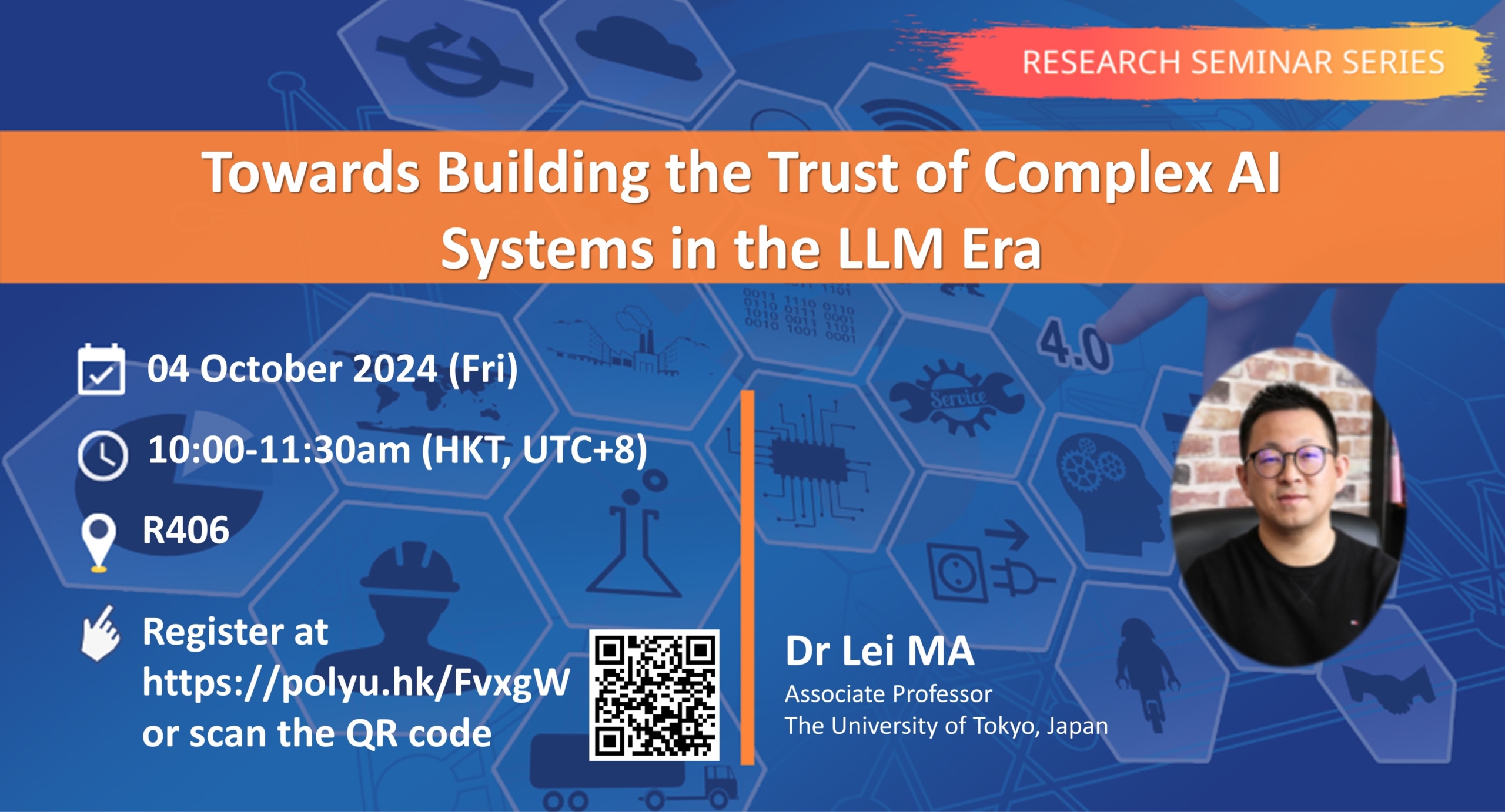Prof. Lei Ma gave a talk on “Towards Building the Trust of Complex AI Systems in the LLM Era”
In recent years, deep learning-enabled systems have made remarkable progress, powering a surge in advanced intelligent applications. This growth and its real-world impact have been further amplified by the advent of large foundation models (e.g., LLM, Stable Diffusion). Yet, the rapid evolution of these AI systems often proceeds without comprehensive quality assurance and engineering support. This gap is evident in the integration of standards for quality, reliability, and safety assurance, as well as the need for mature toolchain support that provides systematic and explainable feedback of the development lifecycle. In this talk, I will present a high-level overview of our team’s ongoing initiatives to lay the groundwork for Trustworthy Assurance of AI Systems and its industrial applications, e.g., including (1) AI software testing and analysis, (2) our latest trustworthiness assurance efforts for AI-driven Cyber-physical systems with an emphasis on sim2real transition. (3) risk and safety assessment for large foundational models, including those akin to large language models, and vision transformers.
Prof. Bart Baesens gave a talk on “Using AI for Fraud Detection: Recent Research Insights and Emerging Opportunities”
Typically, organizations lose around five percent of their revenue to fraud. In this presentation, we explore advanced AI techniques to address this issue. Drawing on our recent research, we begin by examining cost-sensitive fraud detection methods, such as CS-Logit which integrates the economic imbalances inherent in fraud detection into the optimization of AI models. We then move on to data engineering strategies that enhance the predictive capabilities of both the data and AI models through intelligent instance and feature engineering. We also delve into network data, showcasing our innovative research methods like Gotcha and CATCHM for effective data featurization. A significant focus is placed on Explainable AI (XAI), which demystifies high-performance AI models used in fraud detection, aiding in the development of effective fraud prevention strategies. We provide practical examples from various sectors including credit card fraud, anti-money laundering, insurance fraud, tax evasion, and payment transaction fraud. Furthermore, we discuss the overarching issue of model risk, which encompasses everything from data input to AI model deployment. Throughout the presentation, the speaker will thoroughly discuss his recent research, conducted in partnership with leading global financial institutions such as BNP Paribas Fortis, Allianz, ING, and Ageas.
Welcome two new PhD students to join the group!
The group for risk, reliability, and resilience informatics warmly welcomes the following PhD students to join the team:
Tao Wang, and Xinru Zhang.




